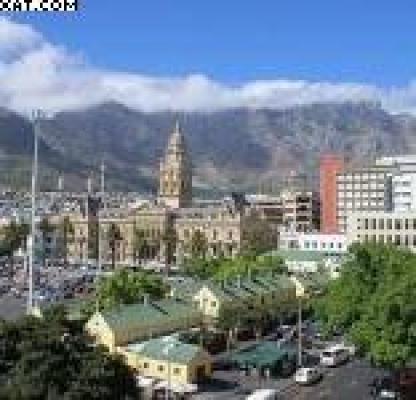Historical (and other monuments) are found throughout South Africa - often in small towns where the visitor least expect it. A number of the historical important and well known momuments are listed below:
Please also see South Africa Historical Sites
The 1820 Settlers National Monument, which honours the contribution to South African society made by the first big influx of English settlers, overlooks Grahamstown in the Eastern Cape.
The Afrikaans Language Monument (Paarl, Western Cape) was erected to honour the Afrikaans Language, a language unique to South Africa.
The Castle of Good Hope in Cape Town is the oldest surviving building in South Africa. Built between 1666 and 1679, this pentagonal fortification was built by Commander Jan van Riebeeck upon establishing a maritime replenishment station at the Cape.
Comprising a memorial, interactive museum and garden of remembrance, the park will strive to accommodate all of the country's unfolding experiences and symbols to tell one coherent story of the struggle of humanity for freedom in South Africa. Located in Pretoria.
The Huguenot Monument in Franschhoek (Western Cape) is dedicated to the cultural influences that French Huguenots have brought to the Cape Colony (and ultimately the whole of South Africa) after their immigration during the 17th and 18th centuries.
The National Women's Monument in Bloemfontein (Free State) commemorates the death of 26,000 Boer women and children who died in the Bloemfontein concentration camp during the Anglo-Boer War.
The Owl House is a national monument in Nieu-Bethesda, Eastern Cape. According to sources, Martins became bored with her "dull" life and resolved to transform the environment around her. She began an obsessive project around 1945 to decorate her home and garden.
The city of Port Elizabeth has an interesting array of monuments. A monument to Prester John, the mythical prince who inspired the 15th Century Portuguese explorers, is believed to be the only one in the world. Above the harbour, on a grassy hill stands a small pyramid, a tribute to Elizabeth Donkin, the late wife of Sir Rufane Donkin, the first administrator of the small settlement.
Probably the most poignant, is the Horse Memorial, a statue depicting a soldier giving his horse water from his hat. This monument commemorates the nearly half a million horses that died in the South African War, mostly from malnutrition, overwork and disease.
Cape Town has a fascinating history spanning back to the mid-17th century and offers a myriad museums, monuments and places of cultural interest scattered across the Peninsula. A wander through the inner city along Adderley street to the Company Gardens and Parliament Buildings will take you pass various statues, buildings like the Slave Lodge, Koopmans-De Wet House and other fine examples of 18th century urban architecture.
Visit the Castle of Good Hope or take the ferry to Robben Island, stroll or drive to Signal Hill and watch the Noon Gun been fired.
Perhaps not your ordinary monument, but The Union Buildings have come to symbolize the seat of power in South Africa. Found in Tshwane / Pretoria, the Union Buildings were designed by the famous architect Sir Herbert Baker. The Union Buildings incorporate the Delville Wood memorial and the Pretoria War memorial.
Situated in Pretoria, the massive granite structure, built to honour the Voortrekkers (Pioneers) who left the Cape Colony in their thousands between 1835 and 1854, was designed by the architect Gerard Moerdijk who had the ideal to design a "monument that would stand a thousands of years to describe the history and the meaning of the Great Trek to its descendants"
